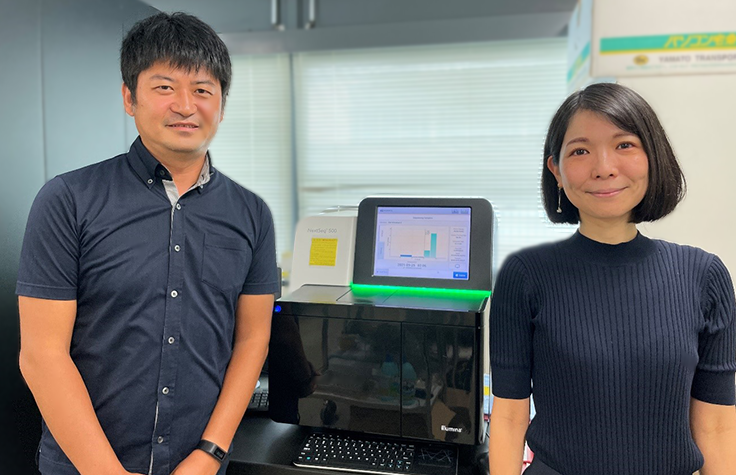Expanding applications with low input samples. New RNA library prep kit with simplified workflow.
Introduction
In June 2020, Illumina launched three new RNA library prep kits. Dr. Motoshige Yasuike's team – the Molecular Function Analysis Group in the Bioinformatics and Biosciences Division at the Fisheries Stock Assessment Center in the Fisheries Resources Institute of the Japan Fisheries Research and Education Agency (FRA) – uses Illumina Stranded mRNA Prep, Ligation, which offers a faster, low-cost library preparation workflow that enables faster, low-input analysis. We asked Dr. Yasuike about the decisive factors in selecting the kit and his user-experience.
Q: What do you use Illumina Stranded mRNA Prep, Ligation, for in your research?
A: We mainly perform transcriptome analysis to organise genome information of important fishery organisms and to understand their various physiological phenomena at a molecular level. In Japan, which has some of the best fishing spots in the world, a wide variety of fishery products are used. Therefore, we target a wide range of species, including not only fish but also cephalopods such as squid, crustaceans such as Japanese tiger prawns, seaweeds such as laver and wakame, and the pearl oysters that are used for pearl farming. We use this kit, which is usable for all such non-model organisms, for gene cataloging and expression profiling (mRNA-Seq).
Q: Why did you choose Illumina Stranded mRNA Prep, Ligation?
A: Previously, we used the TruSeq Stranded mRNA Library Prep Kit. Compared to the conventional product (TruSeq), this new product was advertised as:
- having the recommended minimum amount of total RNA changed from 100 ng to 25 ng, expanding the range of samples that can be analyzed, and
- having the work time shortened by nearly 40%.
So, we switched to this product as soon as it was released.
Q: Can you tell us how you feel about using this product and what you like about it?
A: Our laboratory assistant actually performs the experiments. Since she has a child that is in one of the lower grades in elementary school, she usually works 6 hours a day (8:30 to 15:30). When we were using the conventional TruSeq, it took 3 days to prepare a library, but when using this new product, we can do it in 2 days or less, even if the buffer time is included. Thus, we can now handle a larger number of samples than before. To tell the truth, our laboratory assistant had no experience in molecular biology experiments. However, using this new product with its simplified workflow, she has been able to conduct experiments by herself from the second experiment and on, and has been able to obtain stable results. I think that obtaining stable results regardless of who performs the experiments is a great advantage in terms of increasing the reliability of data.
Q: What do you expect from future Illumina RNA sequencing products (library preparation, sequencing, data analysis, storage and sharing)?
A: In the future, we plan to perform RNA-Seq analysis not only on the fishery organisms we keep in our laboratory, but also on natural samples from a wide range of species collected from the sea and rivers. Among them, there are some from which only a very small amount of tissue can be collected. If it becomes possible to perform analysis using a minute amount of total RNA sample, for example, 1 ng, the range of analysis targets will be greatly expanded. In addition, natural samples are difficult to dissect on board and some of them might end up in a poorly preserved condition. However, these might be valuable samples that can never be collected again. Therefore, we’re hoping that Illumina will develop a kit that can efficiently prepare libraries even with RNA that has been degraded to some extent for non-model organisms.
